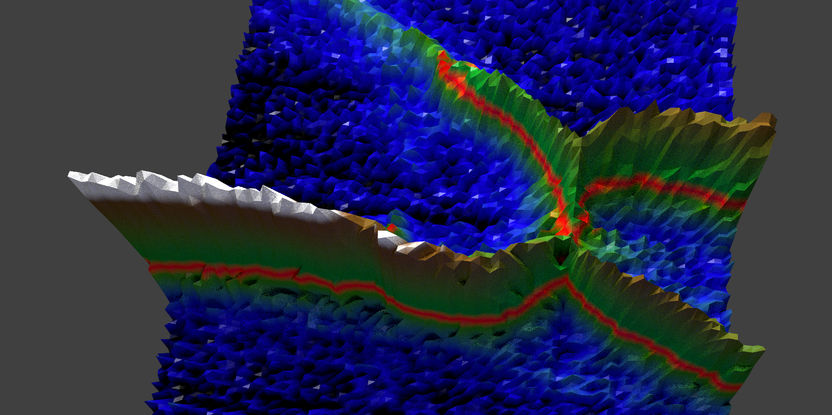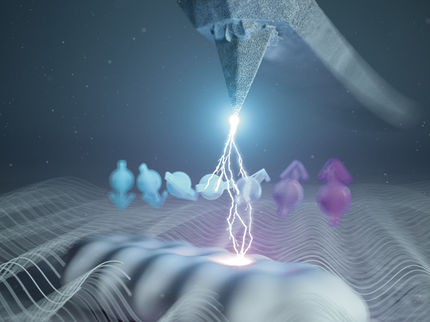Exotic states of light and matter
With a combination of solid-state physics and quantum optics, ETH researchers observe new multiparticle states that so far defied a complete theoretical description. The experiments might be the first step towards developing quantum computers based on photons.

Three-dimensional representation of the polariton states of a two-dimensional electron gas in presence of a high magnetic field.
Professur Atac Imamoglu / ETH Zürich
Tiny components around one centimetre wide and just half a millimetre thick are the subject of experiments being carried out by ETH Professor Atac Imamoglu’s research group in collaboration with Werner Wegscheider from the Laboratory for Solid State Physics at ETH Zurich. The part that the researchers are really interested in is much thinner, measuring just ten billionths of a metre. Between tiny mirrors lies a special layer of the semiconductor material gallium arsenide, prepared in such a way that the electrons can only move within it in two dimensions in the form of two-dimensional electron gas. “We are merging two areas of research that until now have only been studied separately,” explains Imamoglu, head of the ETH Institute of Quantum Photonics.
The mirrors form a microresonator, which catches photons of a certain wavelength. Such light cages are standard tools in quantum optics. However, with the help of two-dimensional electron gases embedded in a microresonator, the solid-state physicists are studying exotic states of matter. “We have used techniques from quantum optics to study solid-state systems whose constituents interact strongly with one another,” says Imamoglu.
In previous quantum optics experiments, physicists used intrinsic semiconductors in which a kind of quasiparticle known as an exciton is formed through photon absorption. In a microresonator, the strong interaction with the photons converts these excitons into new quasiparticles representing a mixture of light and matter – these are referred to as polaritons. “Instead of an intrinsic semiconductor, we used a two-dimensional electron gas,” explains Imamoglu. In contrast to conventional three-dimensional semiconductors, the electrons in the two-dimensional gas are not only very mobile but also interact with one another, i.e. they can become strongly correlated.
Like in Schrödinger’s cat experiment
Using a microscope, the researchers observed what happens to the two-dimensional polaritons and the strongly correlated electron gas in their sample at a very low temperature of just 0.2 degrees above absolute zero. The physicists made some surprising observations, which have now been published online by the journal Science. The elementary excitations of the system are superpositions of two multiparticle states that are so different they actually exclude one another, similar to Erwin Schrödinger’s famous thought experiment involving a certain cat paradox.
No theoretical model has so far been able to explain these newly observed multiparticle states in the studied sample. However, Imamoglu believes there is a very interesting potential application for such superposition states. Although photons do not usually influence one another, in this experimental arrangement they can be coerced to interact strongly. According to the ETH professor, this represents “the holy grail of quantum optics research”. It could one day make it possible to develop a quantum computer based on interacting photons rather than spin-based or superconducting qubits. “However, this area of research is still in its infancy,” says Imamoglu.
Original publication
Other news from the department science

Get the chemical industry in your inbox
By submitting this form you agree that LUMITOS AG will send you the newsletter(s) selected above by email. Your data will not be passed on to third parties. Your data will be stored and processed in accordance with our data protection regulations. LUMITOS may contact you by email for the purpose of advertising or market and opinion surveys. You can revoke your consent at any time without giving reasons to LUMITOS AG, Ernst-Augustin-Str. 2, 12489 Berlin, Germany or by e-mail at revoke@lumitos.com with effect for the future. In addition, each email contains a link to unsubscribe from the corresponding newsletter.


























































